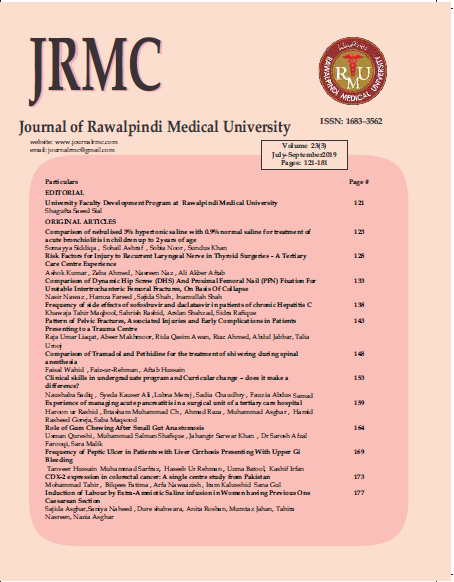Abstract
Objectives: The aim of the study is to compare the effectiveness of tramadol vs pethidine for treatment of shivering occurring after spinal anesthesia.
Study Design: Double blind comparative study.
Place and duration of study: Department of anesthesiology and pain medicine, Combined Military Hospital Malir Cantt Karachi from 1st September to 31st December 2017.
Methodology: 70 patients were selected following non-random convenient sampling and were divided into Group A and B. Group A received 0.25mg/kg tramadol while Group B received 0.35mg/kg pethidine. Time to complete control of shivering was noted. Nausea and vomiting were also evaluated by using a four-point scale (Table1).
Results: Shivering was successfully controlled in 91.4% and 85.7% respectively in group A and B; success rates were not statistically different (p=0.23). Average time between injection tramadol to complete control of shivering in successfully treated Group A patients was 210±63 seconds (range of 100 to 310 seconds) and for pethidine average time was 174±52 seconds (range of 90 to 258 seconds). Pethidine showed a shorter time to control shivering which was statistically significant (p=0.09) but in real time amounted to an average of 0.6 minutes (Figure 2). Nausea and vomiting were more frequent (14.3% vs 8.6%) in group B as compared to Group A and this was statistically significant (p=0.03).
Conclusion: Tramadol was found to be as effective as pethidine in controlling shivering with fewer side effects in spinal anesthesia

This work is licensed under a Creative Commons Attribution-ShareAlike 4.0 International License.
Copyright (c) 2019 Faisal Wahid , Faiz-ur-Rehman , Aftab Hussain

